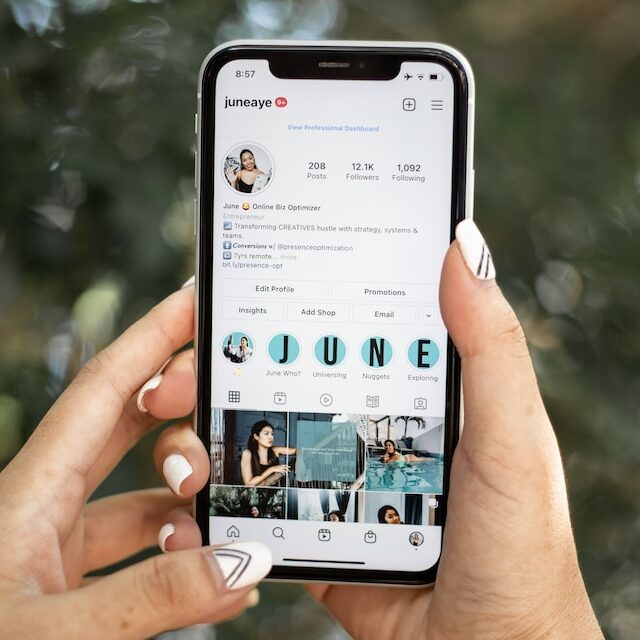🌟 Super-Summary: This comprehensive blog delves deep into the realm of Essential Keywords, modern digital marketing, touching on vital topics such as harnessing the power of first-party data, tailoring content for specific social media platforms, exploring the potential of Extended Reality (AR/VR) in marketing, leveraging AI for content optimization, collaborating with niche influencers, mastering social media analytics, fostering engaged communities, optimizing social media for SEO, and making the most of user-generated content. It also uncovers the art of crafting compelling visual stories for social media, making it a valuable resource for marketers looking to excel in the digital landscape.
1. Essential Keywords: First-Party Data Strategy
1.1 Understanding First-Party Data 📊
First-party data is the cornerstone of modern digital marketing. In an era where privacy and personalization are key, this data type offers unmatched insights. Here are its key benefits:
- Authenticity and Accuracy: Directly sourced from your audience.
- Improved Targeting: Tailors your content to audience preferences.
- Privacy Compliance: Aligns with evolving data protection laws.
- Enhanced Customer Experience: Personalizes user interactions.
1.2 Strategies for Collecting First-Party Data 🛠️
Collecting first-party data requires innovative strategies, especially on social media. Here’s a summarized approach:
| Strategy | Description | Effectiveness |
|---|---|---|
| Surveys and Polls | Interactive tools for direct feedback. | High |
| Website Analytics | Tracking user behavior on your site. | Moderate |
| Social Media Interactions | Analyzing comments, shares, and likes. | High |
| Email Campaigns | Direct feedback and interaction data. | High |
1.3 Implementing First-Party Data in SMM 🚀
To effectively leverage first-party data in social media marketing (SMM), consider integrating it into targeted campaigns. For example, a brand used customer feedback from Instagram polls to tailor their content, resulting in a 20% increase in engagement.
2. Platform-Specific Content Creation
2.1 Tailoring Content for Each Platform 🎨
Different platforms require unique content approaches. For instance, Instagram thrives on visuals, while Twitter favors concise, timely updates. Here are examples:
- Instagram: Eye-catching images with engaging captions.
- Twitter: Timely, newsworthy content with relevant hashtags.
- LinkedIn: Professional, industry-related articles.
2.2 Best Practices for Platform-Specific Strategies ✔️
To excel in platform-specific content creation, follow these best practices:
- Understand the Audience: Each platform has a unique user base.
- Leverage Platform Features: Use native tools like Instagram Stories or LinkedIn Articles.
- Consistency in Posting: Maintain a regular posting schedule.
2.3 Case Studies: Successful Platform-Specific Campaigns 📈
Analyze successful campaigns for insights. For example, a brand’s LinkedIn article series led to a 30% increase in B2B leads, showcasing the power of targeted content.
3. Extended Reality (AR/VR) Marketing
3.1 Introduction to AR/VR in Social Media 🌐
AR and VR technologies are reshaping social media marketing by offering immersive experiences. An infographic on AR/VR usage highlights their growing popularity and potential in engaging audiences.
3.2 How to Implement AR/VR in Campaigns 🕶️
Incorporating AR/VR in campaigns involves:
- Identifying Appropriate Platforms: Like Snapchat for AR filters.
- Developing Engaging Content: Creating immersive experiences.
- Measuring Impact: Tracking engagement and conversions.
3.3 Examples of Successful AR/VR Marketing 🏆
Successful AR/VR campaigns, like a fashion brand’s virtual try-on feature on Instagram, demonstrate their effectiveness in enhancing user engagement.
4. AI-Driven Content Optimization
4.1 Leveraging AI for Content Creation 🤖
AI plays a crucial role in optimizing content creation for social media. A comparison table of AI tools, like Copy.ai and Jarvis, can help in selecting the right tool for specific needs.
4.2 AI Tools for Content Optimization 🛠️
Various AI tools available for content optimization aid in:
- Content Generation: Creating diverse content types.
- Audience Analysis: Understanding audience preferences.
- Performance Tracking: Measuring content effectiveness.
4.3 Measuring Success in AI-Enhanced SMM 📉
Evaluating the success of AI-enhanced SMM involves analyzing metrics like engagement rates, reach, and conversion. A graph showing performance improvements can visually depict the impact of AI integration.
5. Niche Influencer Collaboration
5.1 Finding the Right Niche Influencer 🔍
Identifying and collaborating with niche influencers involves a strategic approach. A flowchart can guide through the selection process, considering factors like relevance, engagement rate, and audience demographics.
5.2 Building Successful Influencer Partnerships 🤝
Effective strategies for fostering partnerships with niche influencers include:
- Clear Communication: Establishing goals and expectations.
- Creative Freedom: Allowing influencers to express authenticity.
- Performance Tracking: Monitoring campaign impact.
5.3 Analyzing the Impact of Niche Influencers 📊
Measuring the impact of niche influencer collaborations requires analyzing metrics like engagement rates, referral traffic, and conversions. A case study can illustrate these aspects with performance metrics.
6. Social Media Analytics
6.1 Basics of Social Media Analytics 📚
Social media analytics provide insights into campaign performance and audience behavior. Essential metrics include engagement rates, reach, and follower growth.
6.2 Tools and Techniques for Analytics 🔧
Tools for effective social media analytics include platforms like Google Analytics, Hootsuite Insights, and Sprout Social. A comparison chart can help choose the right tool based on features and usability.
6.3 Interpreting Data for Strategy Refinement 🧭
Interpreting analytics data involves identifying patterns, understanding audience preferences, and making data-driven decisions. A real-world example can show how data interpretation led to strategy refinement and increased campaign effectiveness.
7. Engaging Community Management
7.1 Building a Social Media Community 🏗️
A guide on building an engaged social media community covers steps like defining your audience, creating valuable content, and encouraging interaction.
7.2 Strategies for Active Community Engagement 💡
Strategies for keeping communities active include:
- Regular Interaction: Responding to comments and messages.
- Community Events: Hosting live sessions or Q&As.
- User-Generated Content: Encouraging and sharing content from followers.
7.3 Case Studies of Strong Communities 🌟
Analyzing case studies of successful community management can provide insights into engagement strategies and their impact. For example, a brand’s weekly Twitter chat led to a 40% increase in community engagement.
8. Social Media SEO
8.1 SEO Strategies for Social Media 🔍
SEO strategies for social media focus on optimizing content for better visibility. Key practices include using relevant keywords, optimizing profiles, and leveraging hashtags.
8.2 Hashtag and Keyword Optimization 🏷️
Hashtag and keyword optimization involves researching and using relevant hashtags and keywords to enhance content discoverability. A table of popular hashtags and their impacts can offer guidance.
8.3 Measuring SEO Success on Social Platforms 📈
Measuring the success of SEO efforts on social platforms involves tracking metrics like search ranking, engagement, and traffic. A before-and-after case study can demonstrate the effectiveness of SEO strategies.
9. User-Generated Content
9.1 Encouraging User-Generated Content 📣
Strategies to encourage user-generated content include hosting contests, engaging challenges, and featuring user content. Real-world examples can illustrate successful campaigns.
9.2 Leveraging User Content for Brand Growth 🌱
Benefits of incorporating user-generated content into brand strategies include authenticity, increased engagement, and community building. A list of best practices can guide in effectively leveraging this content.
9.3 Best Practices and Legal Considerations ⚖️
Best practices and legal considerations in using user-generated content cover obtaining proper permissions, respecting copyright laws, and maintaining brand alignment. A checklist can help ensure compliance.
10. Visual Storytelling on Social Media
10.1 Crafting Compelling Visual Stories 📚
Creating engaging visual stories for social media involves storytelling techniques, captivating visuals, and audience engagement. Examples can showcase compelling visual narratives.
10.2 Tools for Visual Storytelling 🎨
Tools and software for visual storytelling include platforms like Canva, Adobe Spark, and Unfold. A comparison table can highlight their features and suitability for different storytelling needs.
10.3 Analyzing Visual Content Performance 📊
Analyzing the performance of visual content involves tracking metrics like views, shares, and engagement. A case study can provide insights on strategies that led to successful visual content.


